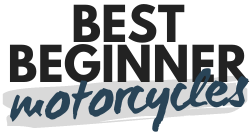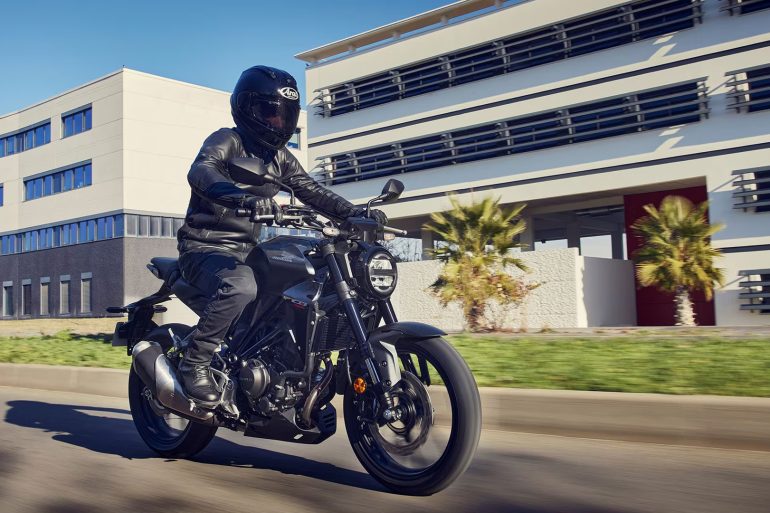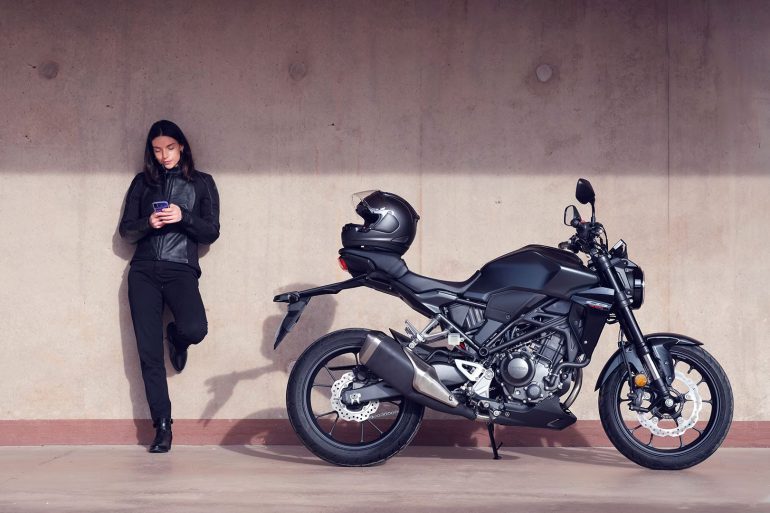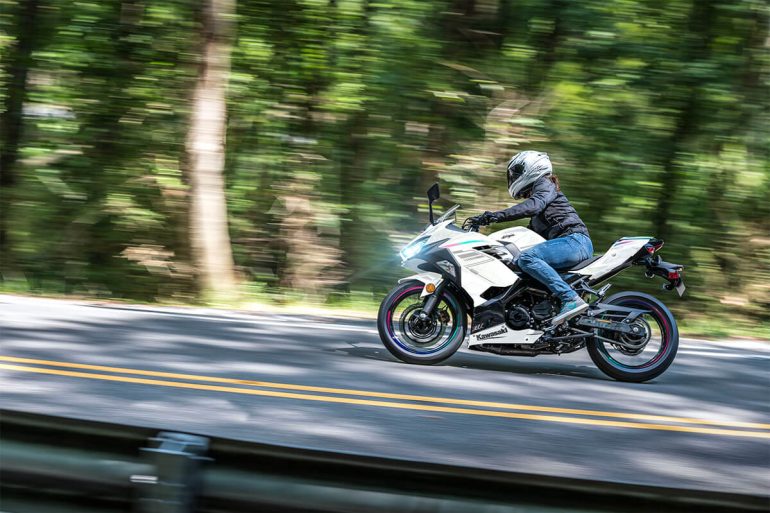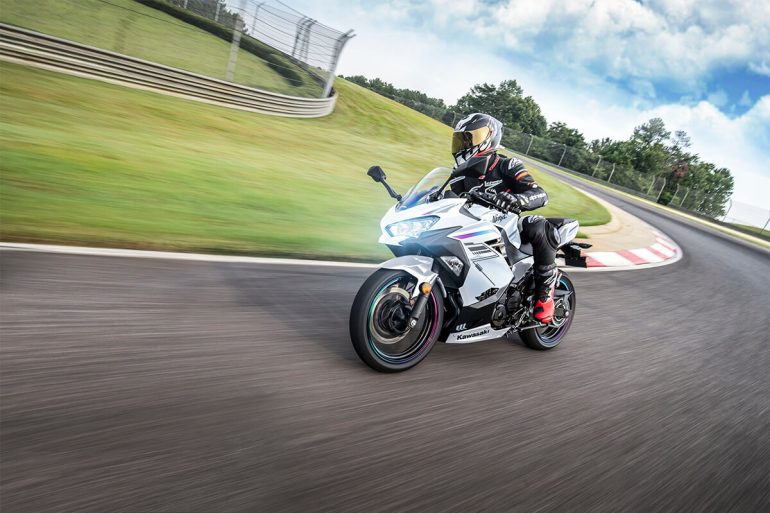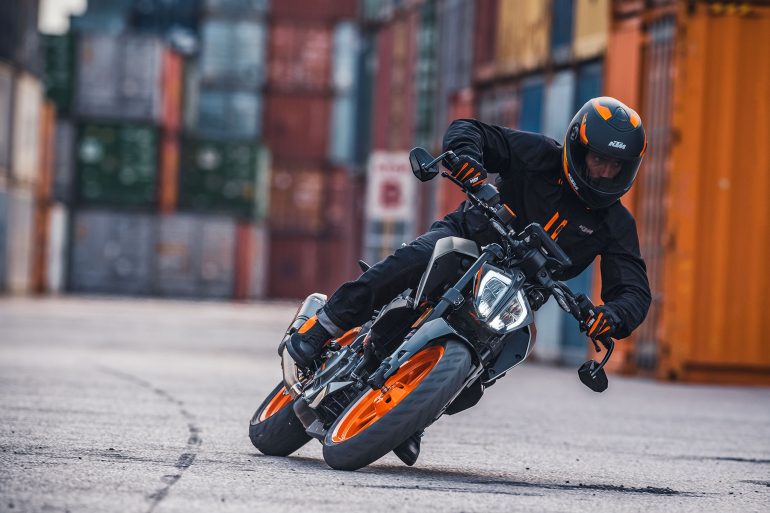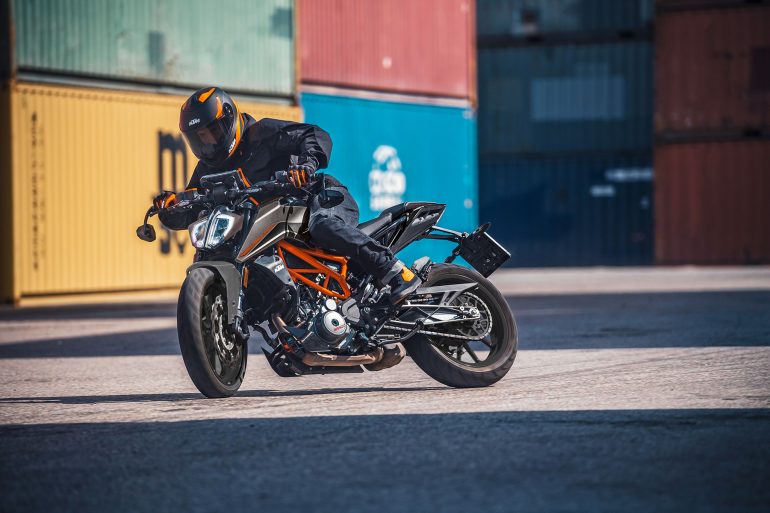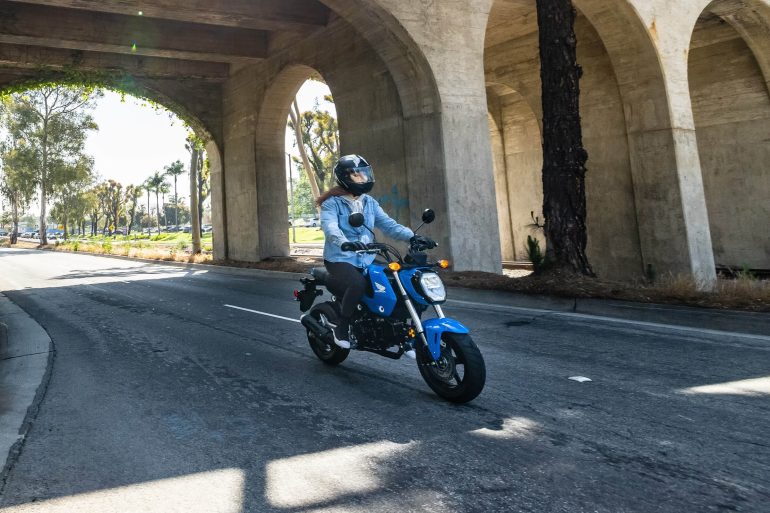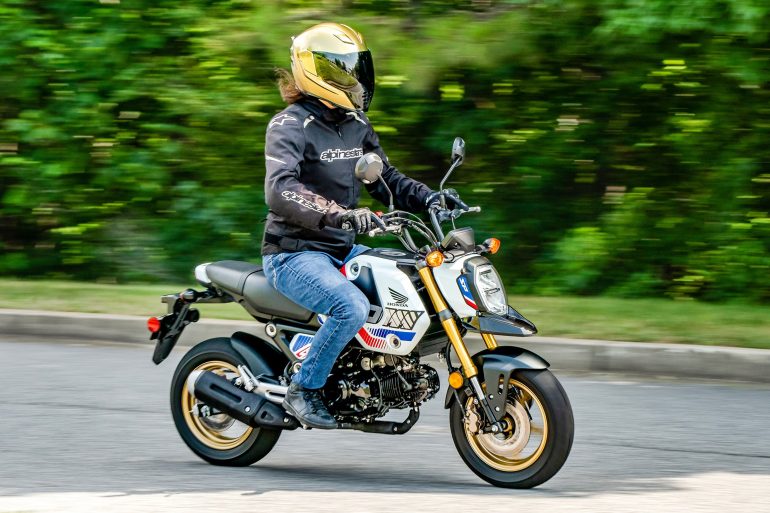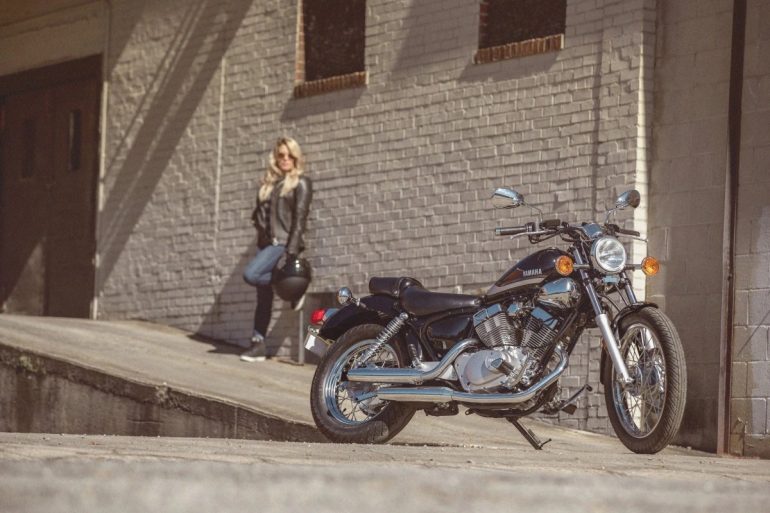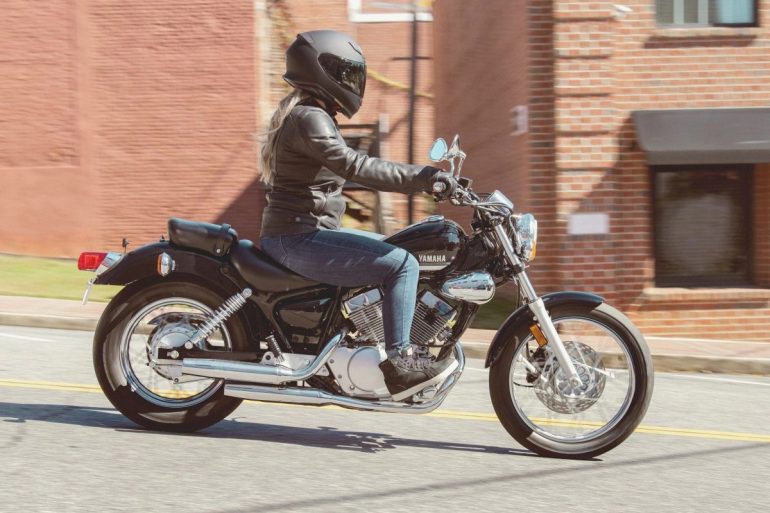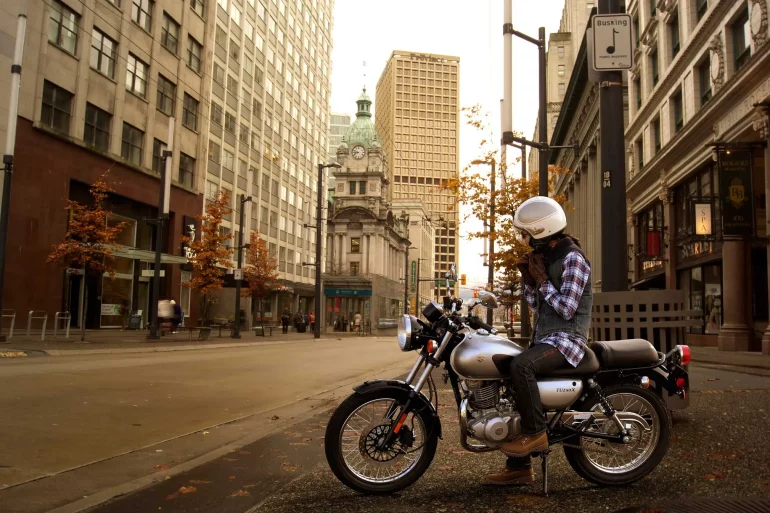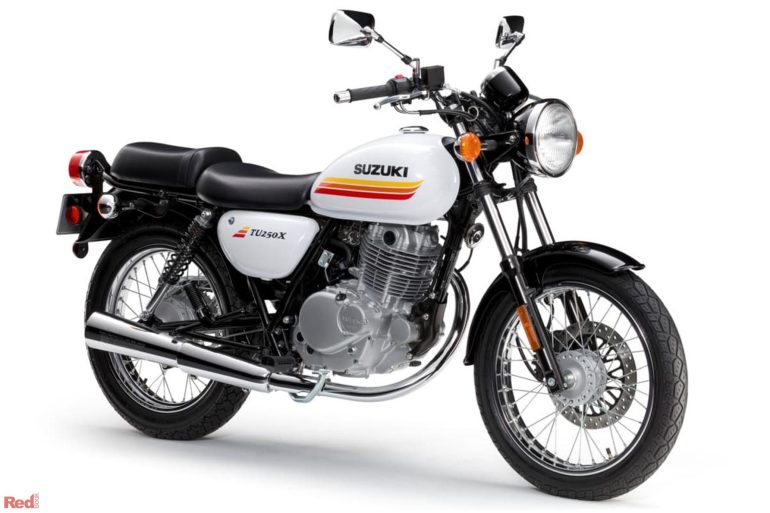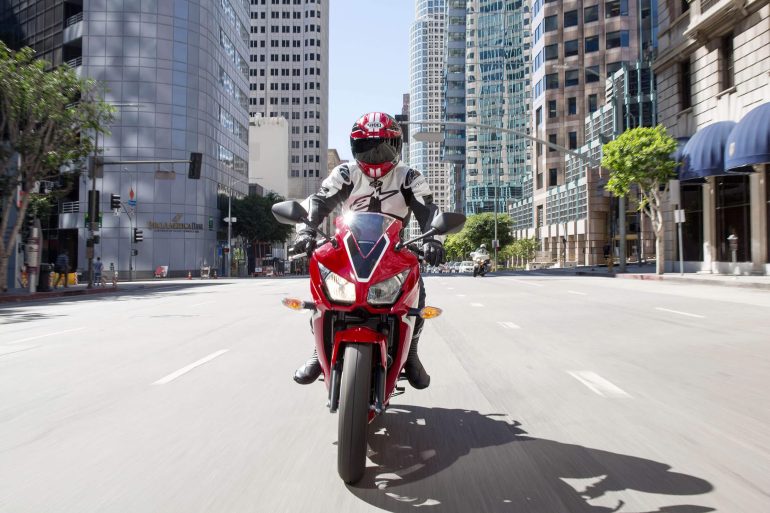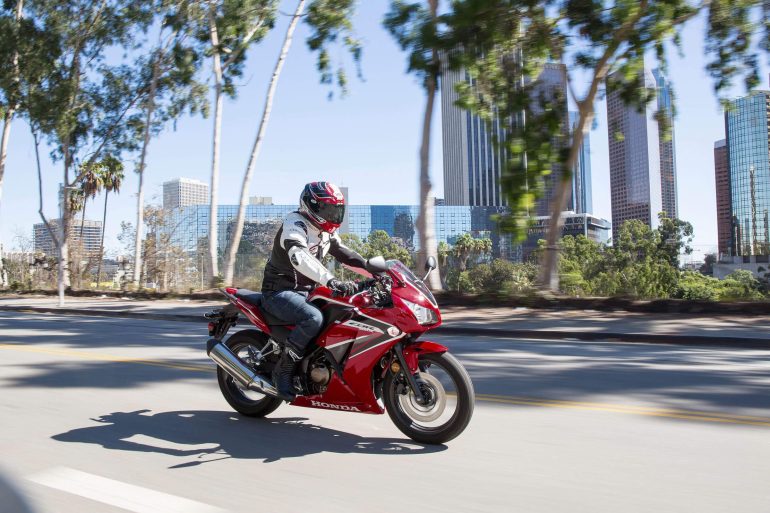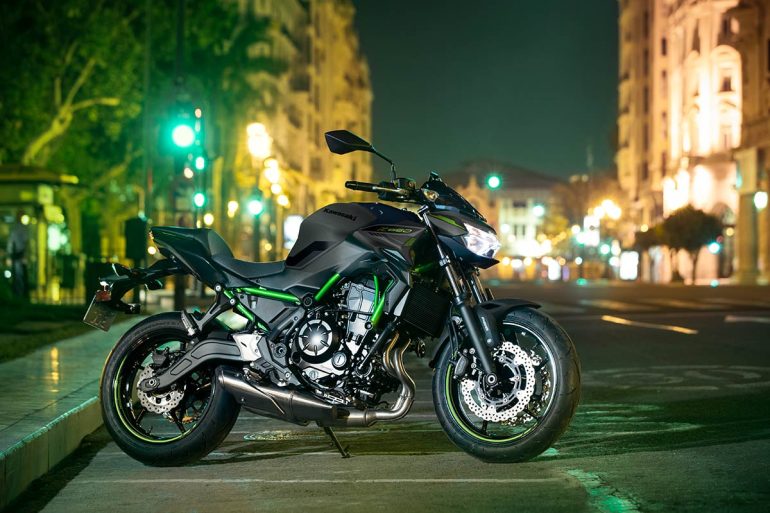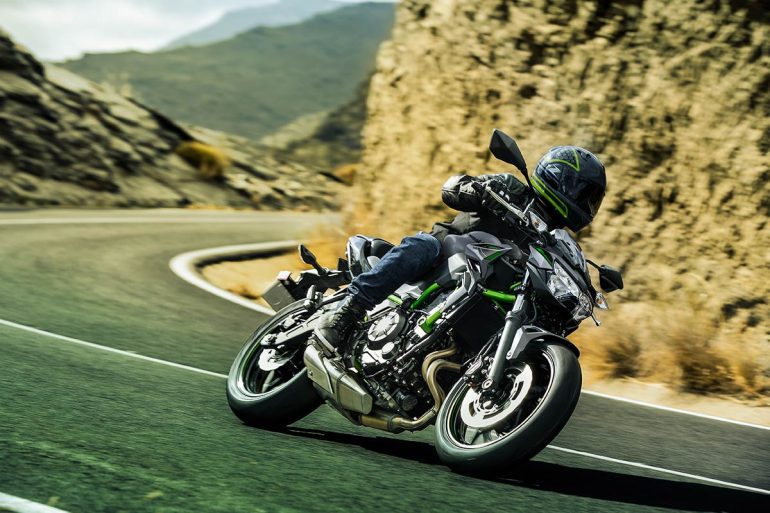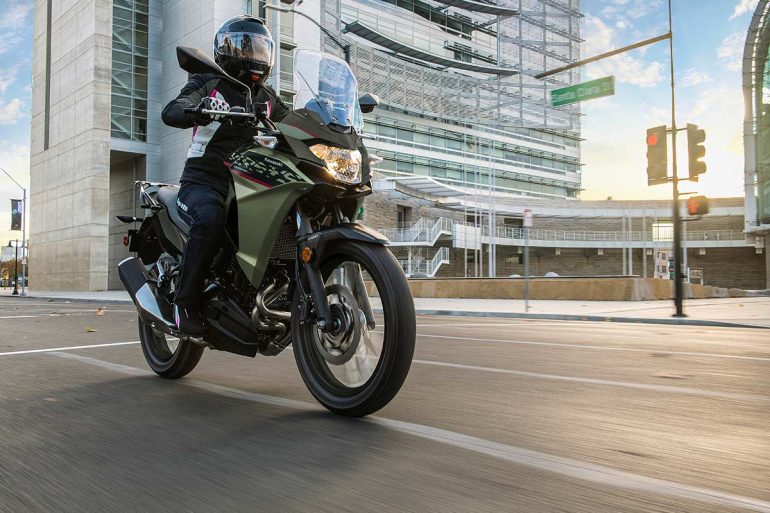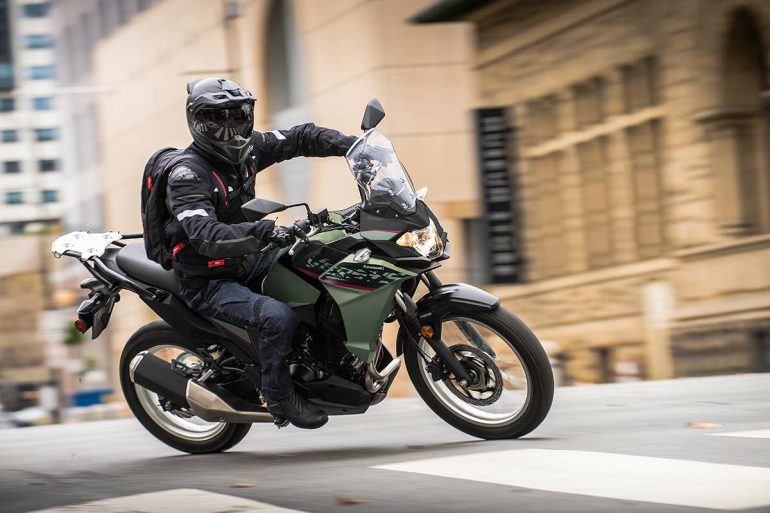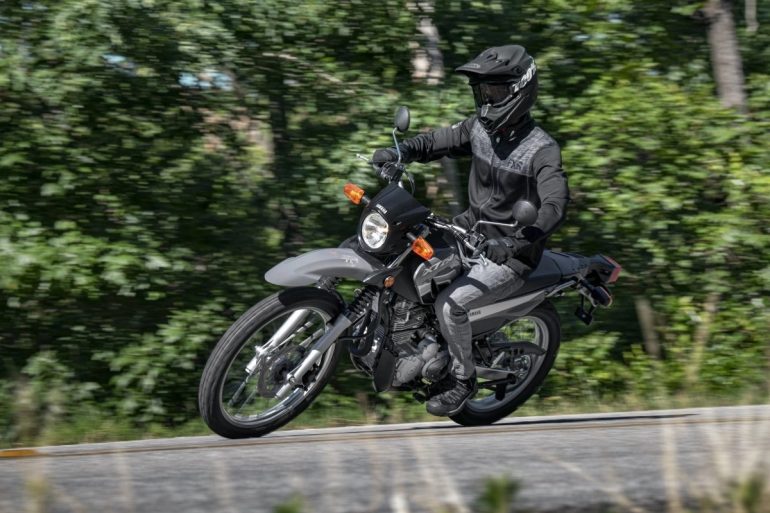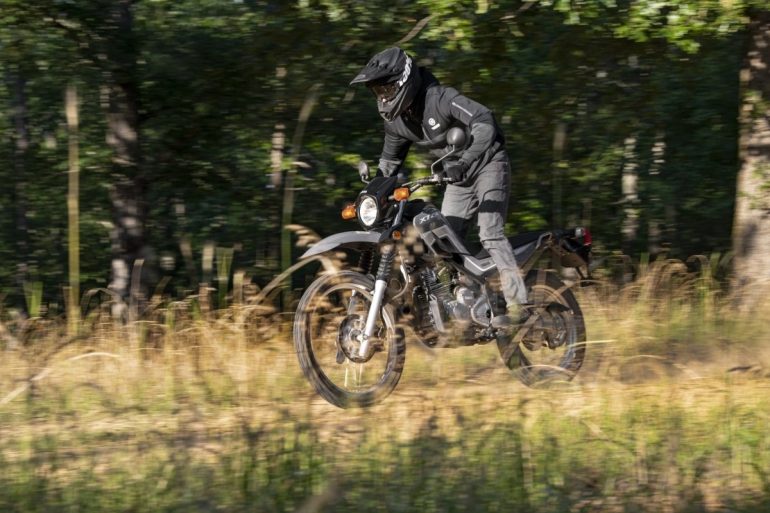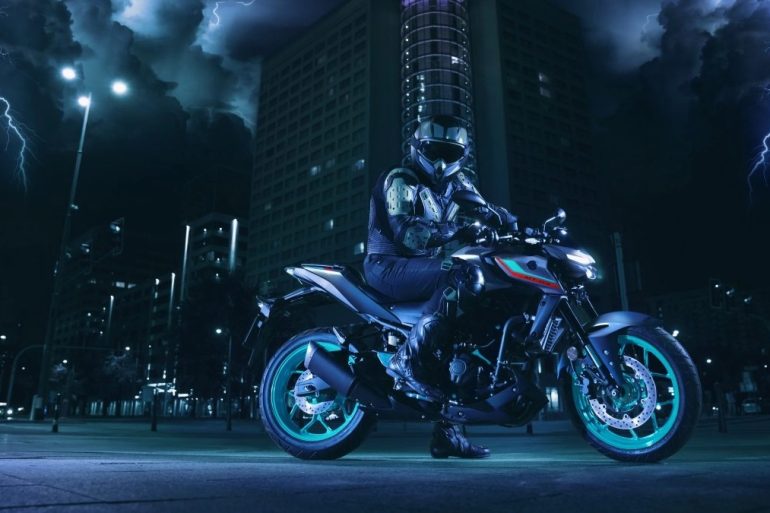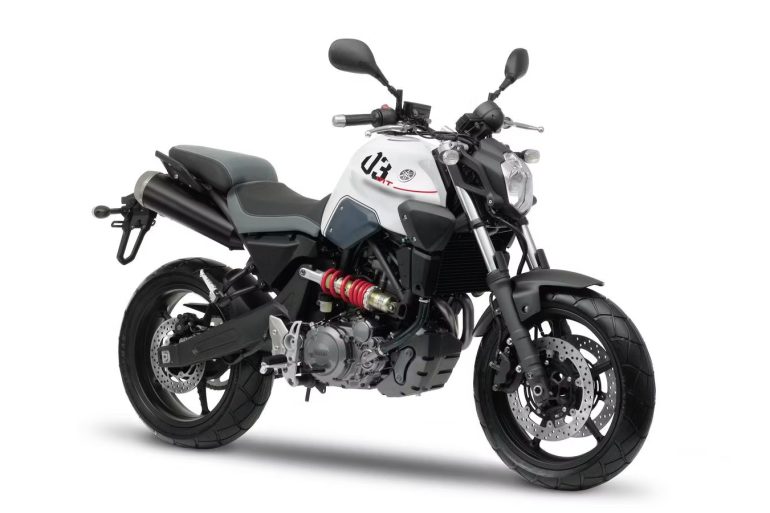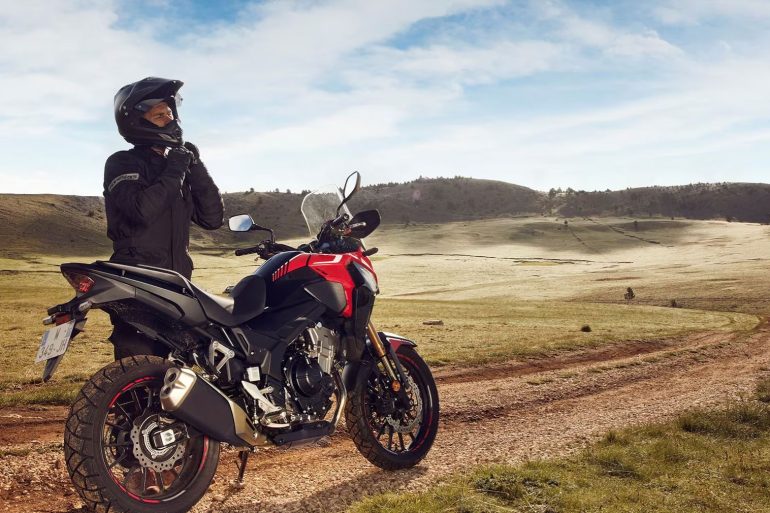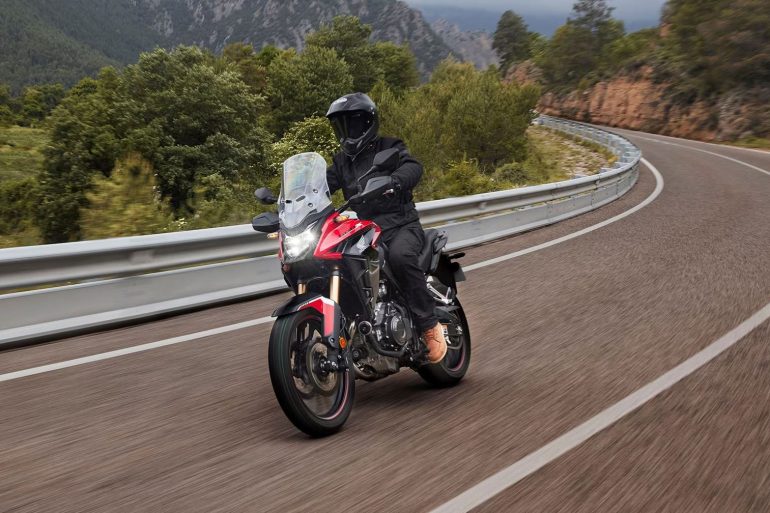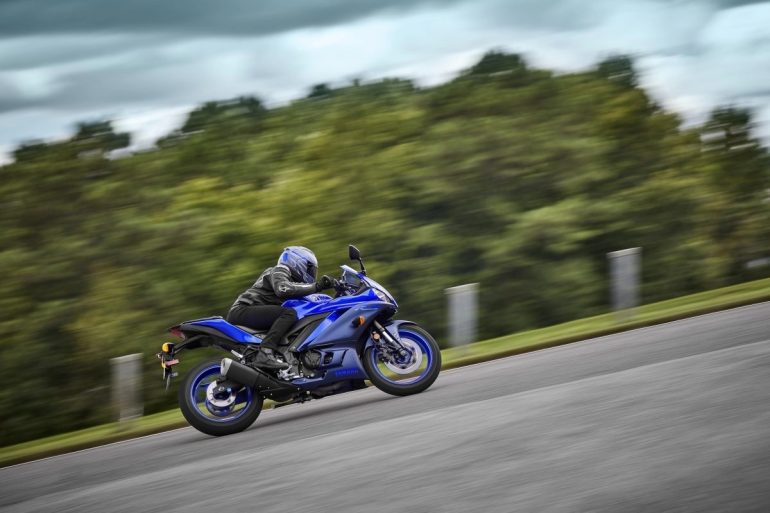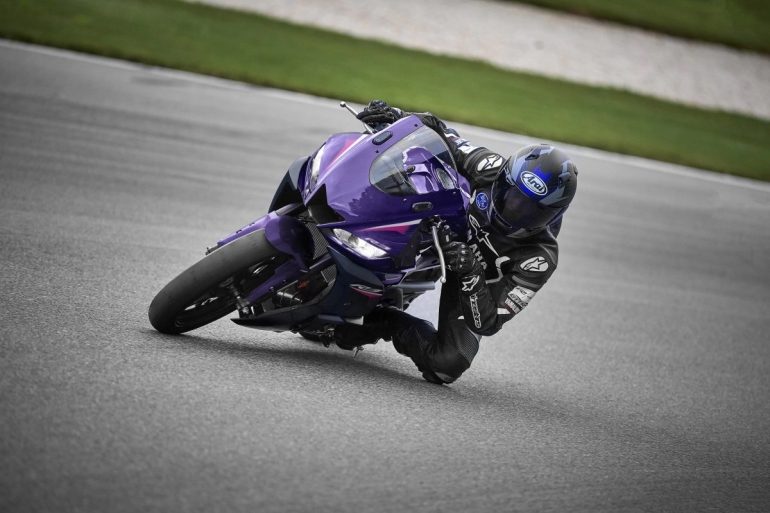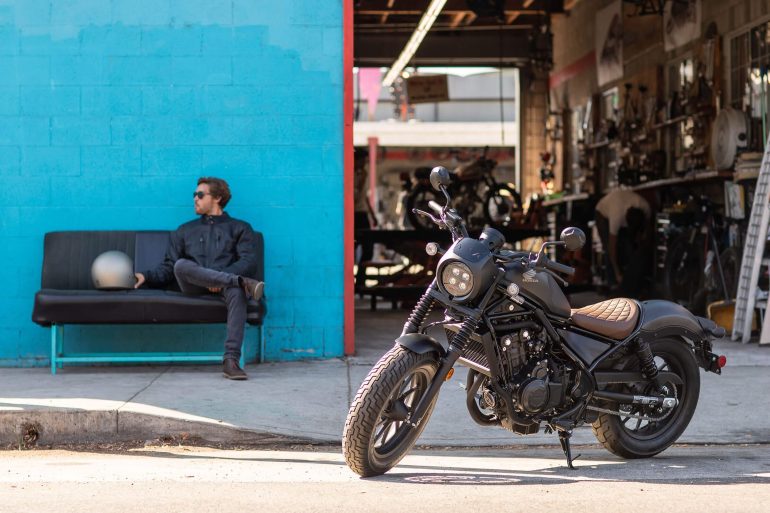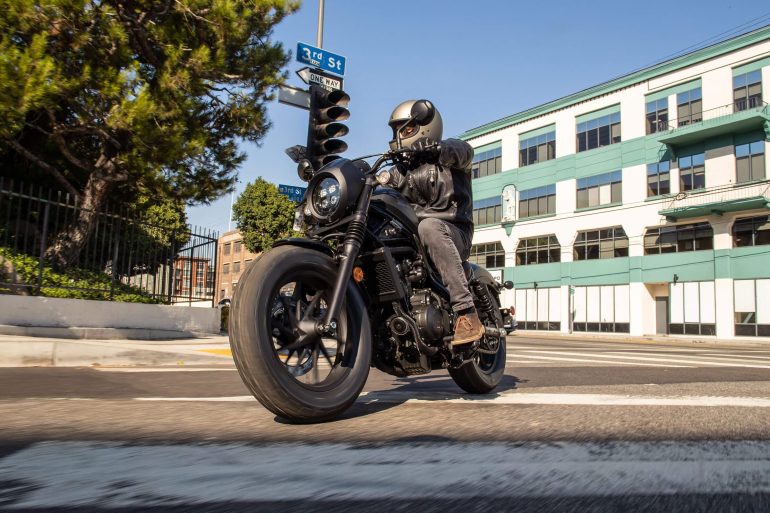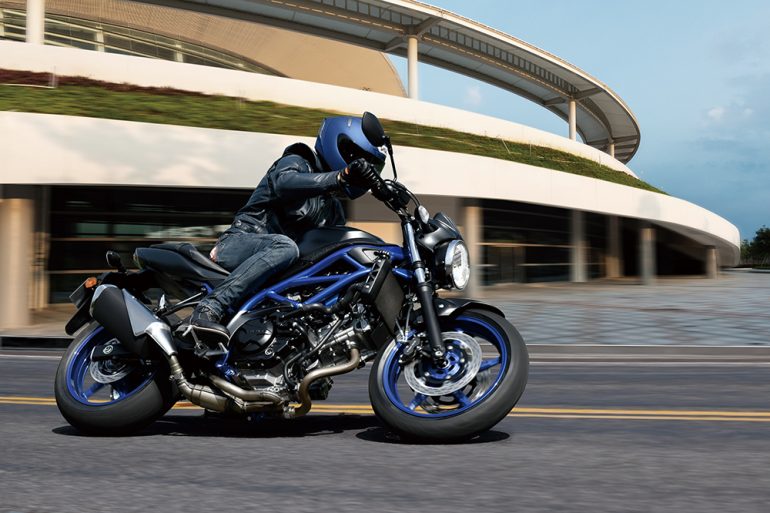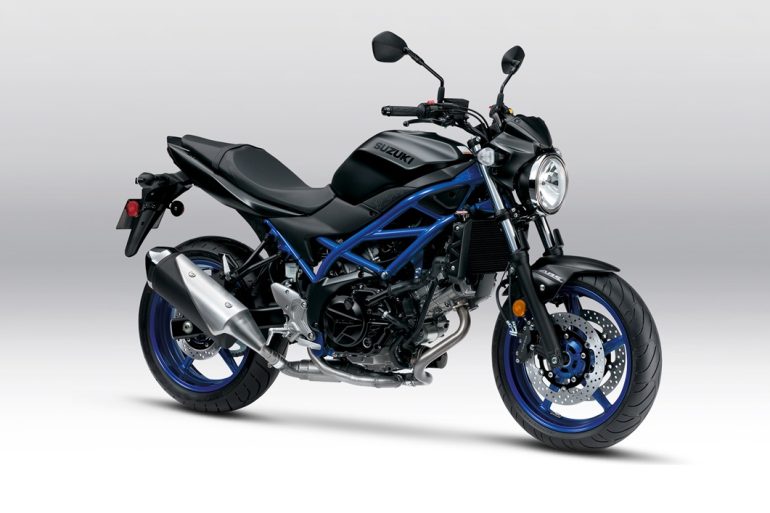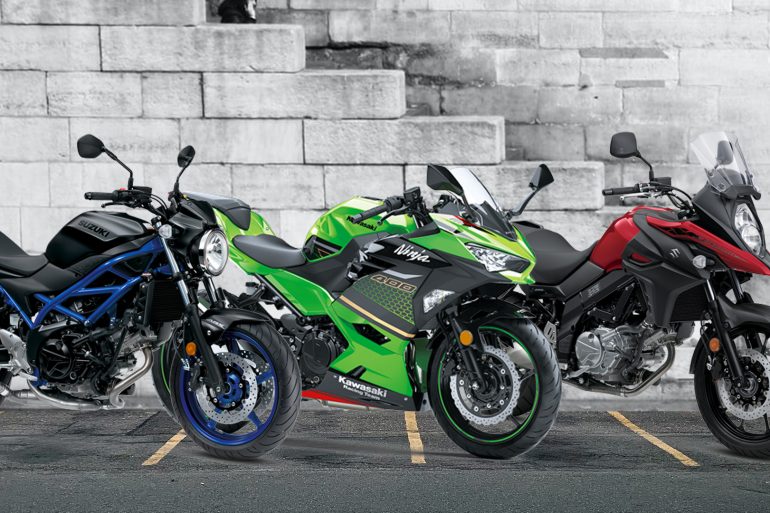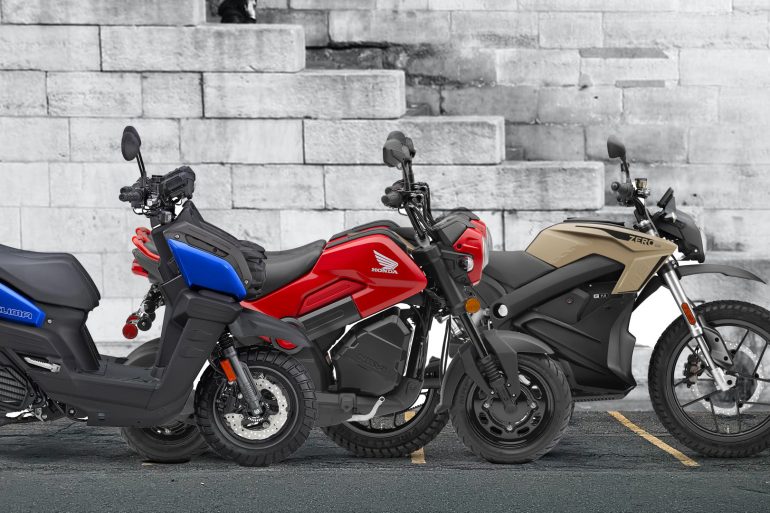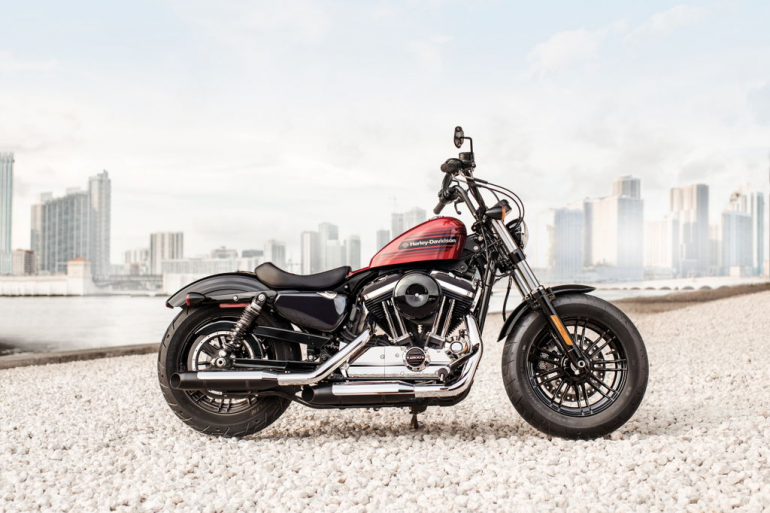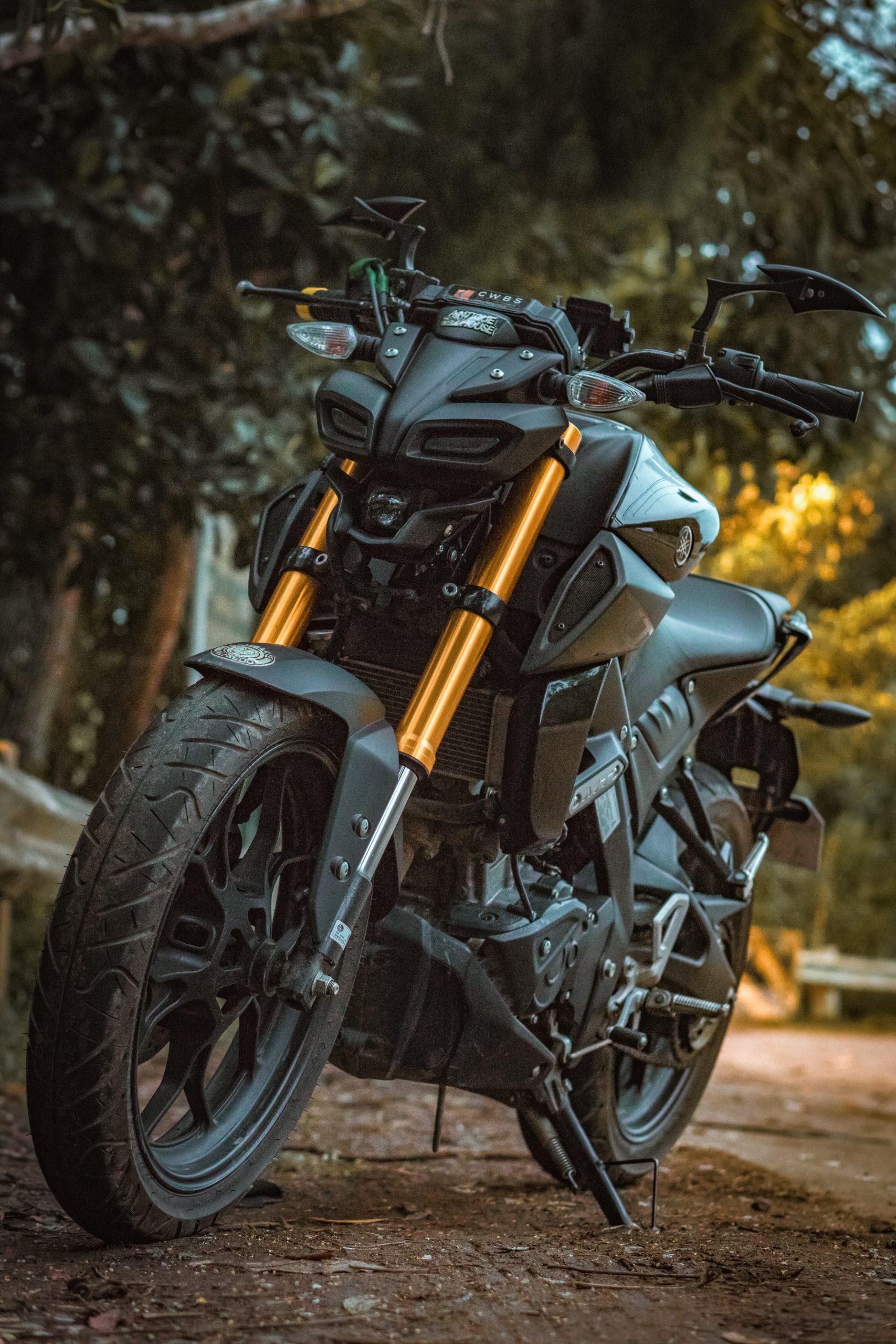The Top 15 Used Motorcycles For New Riders
Updated April 20, 2023 by Simon Bertram
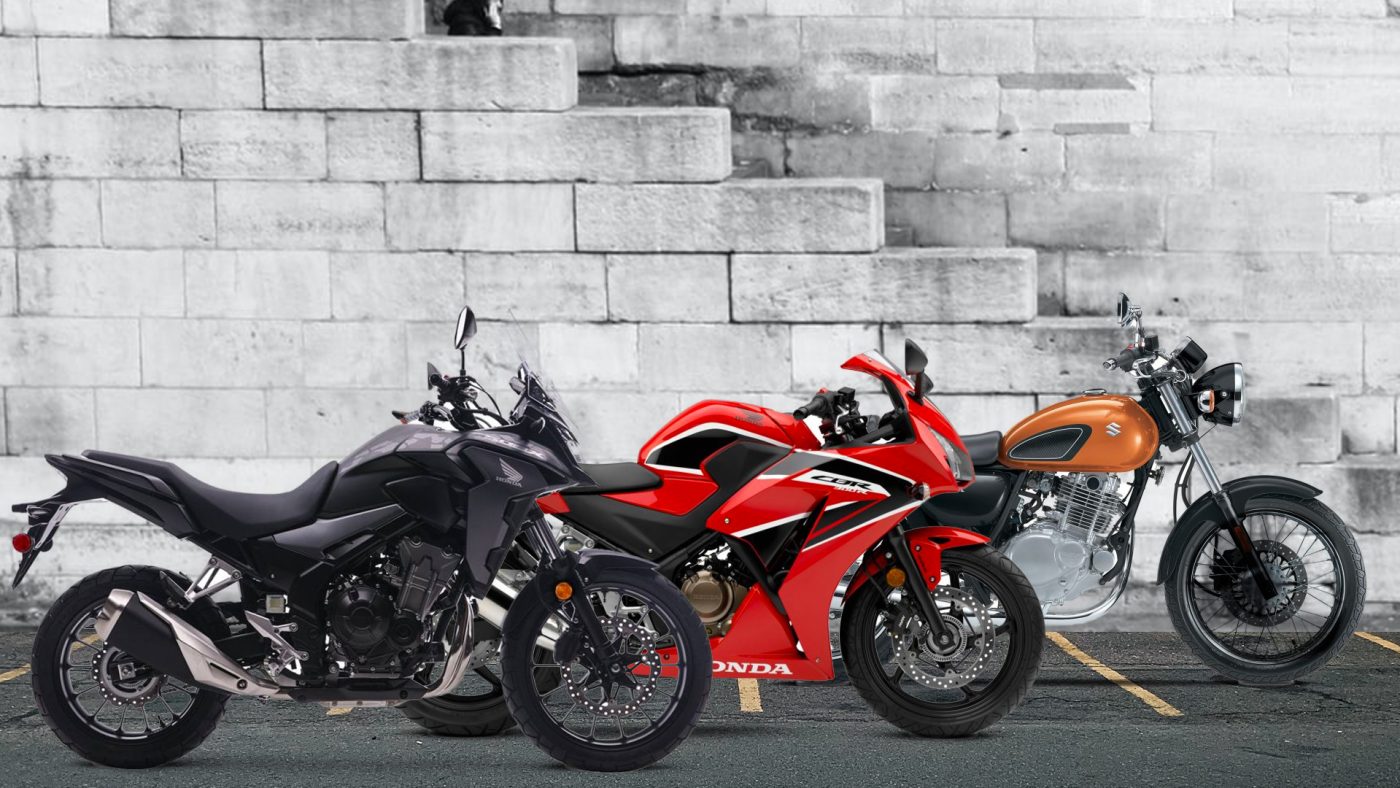
You Don't Have To Buy New To Get A Great Bike
Article Quick Nav
These are the best used bikes for novice riders:
You’ve done it—you completed the safety course, you passed your license test, and now you’re a fully qualified motorcycle rider. Now comes the most exciting part of being a new rider: buying your first bike!
Now, instead of going to the showroom and picking up a shiny new bike (unless you really want to; there’s nothing wrong with brand new!), it may actually be more beneficial to buy a used bike. Not only are they generally less expensive than brand new bikes, but often, they’re also great in helping you learn the finer points of riding and maintenance.
5 Considerations When Buying A Used Bike
#5: BUDGET
When you plan out a budget for a used bike, make sure to consider the extra expenses: gear, insurance, registration, taxes, storage, and the lot.
With proper budgeting, you can get awesome gear, full insurance coverage instead of the bare minimum, a rental shed to store your bike in over the winter instead of leaving it out by the curb with a cover on it, and much more.
As a general guideline, we recommend that a first bike should not cost more than $7000—including gear, registration, insurance, full maintenance (once before the riding season and once when wintering your bike), and, of course, the bike itself.
#4: POWER OUTPUT
Ah yes, the classic argument among all motorcyclists: where should you start on power?
As a general rule, we recommend staying under 600-650cc for engine displacement and keeping the power under 75 hp. This is especially true for sport bikes (new riders can sometimes handle 750cc in a cruiser without too much trouble, since these bikes are designed to be slower than sport models).
A great example of a starter bike would be something like a Suzuki SV650, which delivers 650cc of easily managed power in a very linear and controllable way.
A Yamaha YZF-R6 would be much less practical to start out on, since it’s an extremely twitchy beast—quite literally a World Superbike Championship racer with mirrors and blinkers. A bike like that requires experience and respect before you can ride it safely on the street.
To be safe, just keep it below 650cc and 75 hp for a great learning experience. As always, though, respect the throttle. Even an SV650 can throw you off violently if you go too hard or too fast.
#3: WEIGHT
Even bikes with the same amount of engine displacement can weigh vastly different amounts, depending on their type. We suggest looking to the light-to-middleweight bikes in your preferred style. For a naked, you’re looking at 300-400 lbs or thereabouts. For a cruiser, anything under 600 lbs is considered lightweight.
Why stay light? For the answer to that question, you can look to basic Newtonian physics. An object in motion will stay in motion if propelled with enough force. So a light or middleweight bike will give you better feel, as there is less mass dampening the effects of inertia and you can react to a small mistake much more easily.
Conversely, a heavy bike has a lot of mass dampening the feel, and you might not even realize you’re in trouble until you’re sliding along the pavement. Keep it light, kids.
#2: INTENDED USE
Are you planning to commute on your bike? A naked, sport, adventure, or cruiser bike will get you there. Are you planning on riding your bike to your friend’s farm for a fun trail ride? A dual-sport or a properly-prepared adventure bike will be perfect.
I do my all my riding in the city and on highways, so I’m a big fan of cruiser bikes. But naked and adventure bikes also make excellent choices for casual riders. For my money, a sport or supersport bike is only worth it if you’re planning a lot of track days—and as a new rider, I’m guessing you aren’t there just yet.
#1: COMFORT/ERGONOMICS
Riding a bike can be exhausting. Your wrists, back, neck, legs, and feet can all get surprisingly sore. I’m 6’3″ and in my 30s—that lovely chapter of life where joint pain begins to rear its ugly head. So folding myself in half on top of a bike for more than half an hour or so can get really uncomfortable.
Before you invest thousands of dollars in a bike, make sure you pick one that’s comfortable for you to ride. That means thinking about seat height, seat width, peg position, handlebar height, and access to your controls. I started my riding career on a Kawasaki Vulcan 900 Classic LT—a bike too big for most riders to start on, which is why it’s not on this list. But it was one of the only bikes I could find that would accommodate my lanky frame without also offering an irresponsible amount of power. The point is, get a bike that works for you.
SPECIAL MENTION: AGE
Generally, you don’t want to buy a used bike that’s more than 10 years old, although there are exceptions to every rule. If you’re handy in the mechanical department and are okay with spending a little more time and money on maintenance, I would say that 12 to 15 years old is the absolute farthest I would push.
About Our Selections
These selections considered ease of use, rideability, price, and how effective each motorcycle was in helping the beginner or newer rider learn the intricacies of riding. We are confident that any of these bikes will be superb starter or second bikes for most riders.
If you are of the big and tall variety, many of the larger steps up in the model family are just as good. For example, if you are 6' tall and 230 lbs, a Kawasaki Ninja 400 might be too small or not powerful enough, in which case the Ninja 650 would be an excellent starting point. If you are looking at a Honda CB300R, the next step up for the bigger rider is the CB500R. Just make sure that the bike you are stepping up to is of the same model family, as a CB500R and a CBR500R are two completely different bikes.
Honda CB300R
A fun and sporty naked that hints at streetfighter DNA in its lines and power delivery
Why We Picked It:
This little Honda has been in production since 2017. You can get a brand new 2023 model for just over $5,000, and you’re probably looking between $2000 to $4500 for a used one in good condition. It’s also a featherweight at 315 lbs, with a single cylinder 286cc pumping out 31 hp.
Despite that, it accelerates smoothly and can safely maintain freeway and highway speeds. It has a 2.5 gallon tank, but it sips fuel and can realistically carry you over 180 miles with sensible use of throttle and gears.
Specifications:
Price: $5,049 (2023 MSRP)
Engine: 286cc four-stroke single
Power: 31 HP
Torque: 20 lbs-ft
Transmission: 6 Speed Manual
Curb Weight: 556 lbs
Ideal For:
Newer riders that want a naked sport bike that is easy to ride while hinting at streetfighter lines and attitude
Highlights:
Comfortable yet very agile
Very strong, linear torque curve from the grunty, reliable single
Standard ABS, LED lighting, and an easy to read, uncomplicated LCD dash
Learn More:
Kawasaki Ninja 300 & 400
Favorites of many for how communicative and stable these bikes are
Why We Picked It:
Simply put, Kawasaki’s small-displacement models are great beginner bikes. If you’re leaning more towards the sport end of things, the Ninja 300, produced from 2012 until 2018, and its big brother replacement, the Ninja 400, are both extremely capable entry-level bikes.
Both make nearly the same power (41 and 49 HP respectively), and both weigh under 400 lbs. What makes these superb starter sportbikes is that they have a nearly-standard riding style, yet you can still drop into a tuck when necessary—you get the best of both worlds. They are also fuel-efficient and have very linear power delivery, and they will both reward you if you choose to show them a track day or two.
The 2023 Ninja 400 starts at just over $5000, and a used one in good condition will run you from $2500 to $4500 on average.
Specifications:
Price: $5,299 (Ninja 400 2023 MSRP)
Engine: 296 to 399cc parallel twin
Power: 41 to 49 HP
Torque: 17.5 to 28 lbs-ft
Transmission: 6 Speed Manual
Curb Weight: 370 to 385 lbs
Ideal For:
Beginner riders looking for an uncomplicated, communicative sport bike to start out on
Highlights:
Very good power to weight, making them nimble bikes that also love to lean into corners
Comfortable sport-standard riding position
ABS is standard since 2015 on the 300, and all years of the 400. Both also feature an assist and slipper clutch.
Learn More:
KTM 390 Duke
A fun, agile naked that is a streetfighter in everything but name
Why We Picked It:
If you have a decent budget and don’t mind doing slightly more expensive maintenance than you’ll need for most Japanese bikes, the KTM 390 Duke is one of the best naked bikes out there. In production since 2013, these little bundles of joy have great low-end grunt to get you off the line, and they are pretty much the poster child for the standard riding position.
Also, KTM bikes have always had superb engines, and the 390 Duke is no different with its 373 cc single-cylinder pushing out 43 hp. It has great torque all over the place and accelerates smoothly from a dead stop, giving you enough oomph to get your heart pumping but not launching you towards triple-digit speeds in a heartbeat.
These bikes are a bit harder on the wallet when new—but a well-maintained used 390 Duke will usually cost between $3500-$5500.
Specifications:
Price: $5,899 (2023 MSRP)
Engine: 373cc four-stroke single
Power: 43 HP
Torque: 24.3 lbs-ft
Transmission: 6 Speed Manual
Curb Weight: 376 lbs
Ideal For:
New riders looking for a naked sport bike that can either remain their primary bike, or be their introduction to streetfighters
Highlights:
Lightweight and very agile
Lots of low-down grunt to get you moving, and the torque curve is progressive and linear as the revs rise
Dual zone ABS is standard, as is a full color TFT dash and LED lighting all around.
Learn More:
Honda GROM
A mini-bike that is astonishingly capable and hilariously fun
Why We Picked It:
I’ll flat out say it: the GROM is a love it or hate it bike. Those that hate it hate the guts out of this mini motorcycle and curse the fact that it exists. Those that love it love it. However, despite the controversy around the GROM since it debuted in 2014, it actually is a great beginner bike.
Fully street-legal in all states, it’s ridiculously light, has enough power to get you to about 60 mph if you spank the ever-living daylights out of it, and will give you a hell of a laugh as well. I have yet to see any rider (that isn’t part of the anti-GROM club) come off one without a massive grin under the helmet. Because of its low power and incredibly light weight, it provides incredible rider feedback. And it’s cheap as chips to insure too, which is an added bonus.
Brand new, you’re looking at $3,500—but I have found some used GROMs for as low as $1,000 in very respectable condition. These bikes are inexpensive enough that you could even buy them as spares to tool around on when it’s too much of a hassle to use your regular bike for short trips or errands.
Specifications:
Price: $3,499 (2023 MSRP)
Engine: 124cc four-stroke single
Power: ~10 HP
Torque: ~8 lbs-ft
Transmission: 5 Speed Manual
Curb Weight: 223 lbs
Ideal For:
Beginner riders wanting an extremely fun little runabout motorcycle for in-city use
Highlights:
Designed from the outset to be a smile generating machine
Still powerful enough to handle city speeds for runabout use or just fun rides
Can be fixed with a hammer and some choice words, making this a perfect bike to develop good maintenance habits with
Learn More:
Yamaha V-Star 250
What Yamaha calls a Sport Heritage bike, it's a small displacement classic cruiser complete with a V-twin
Why We Picked It:
Replacing the Virago 250 in 2008, the V-Star 250 is a great entry-level cruiser for the slightly more rebellious new rider. Powered by a relatively unchanged 249cc v-twin, it doesn’t need much displacement or horsepower to get going as it’s a super lightweight cruiser (only 325 lbs wet). And despite the tiny engine, the V-Star will cruise happily at 70 mph in 6th gear.
What makes it beginner-friendly is that it’s very approachable and doesn’t want to bark or bite at you. It has linear torque and comfortable controls that easily come to hand and foot, and it’s comfortable enough for long rides. It’s also light enough to be maneuverable despite its cruiser configuration, and it provides excellent rider feedback.
New 2023 models start at $4,700, but used models can run from $1,500 to $4,000 depending on their year and mileage. That means this can be a great bargain bike as well as an introduction to the cruiser lifestyle.
Specifications:
Price: $4,699 (2023 MSRP)
Engine: 249cc V-twin
Power: 21 HP
Torque: 15.2 lbs-ft
Transmission: 5 Speed Manual
Curb Weight: 324 lbs
Ideal For:
Beginner riders that are looking for a classic American-style cruiser that gets the job done at half the price of an actual American brand cruiser
Highlights:
Despite its tiny size, the 249cc v-twin has all the character and subtleties of bigger cousins
Very relaxed seating position with mid-mount controls, perfect for the newer rider that wants to progress to larger, more powerful cruisers in the future
As basic and reliable as a wood-burning stove, with a price tag to match. No ABS may seem worrying, but the brakes are excellent and have great feel through the controls
Learn More:
2023 Yamaha V-Star 250 specs, features, & pics
Suzuki TU250X
A neo-retro bike that you can fix with a hammer and ride all day long without issue
Why We Picked It:
The TU250X was introduced to the USA in 2009 with one goal in mind: to improve the image of the Universal Japanese Motorcycle. Styled after many of Suzuki’s sports models of the 60’s and 70’s, it helped kick off the retro-modern style that swept through almost every manufacturer in the 2010s.
This bike has a barking little 249cc engine putting out 17 hp and a torque curve that is easy to feel—as well as being linear until it drops off slightly near the redline. It’s also a very light bike at 330 lbs wet, and it comes with modern suspension, brakes, and fuel injection. It’s also great on gas; a 3.2-gallon tank can last you a couple of hundred miles without any issues.
It sold for just over $4,600 new in 2019 (the last model year for this bike), but a decent used one can cost as little as $1,500.
Specifications:
Price: $4,649 (2019 MSRP)
Engine: 249cc four-stroke single
Power: 16.9 HP
Torque: 12.5 lbs-ft
Transmission: 5 Speed Manual
Curb Weight: 326 lbs
Ideal For:
Beginner riders wanting a lightweight bike with British-retro inspired looks but modern technology
Highlights:
Without much weight to get in the way, allows a new rider to feel absolutely everything the bike is doing under them
While not overly fast with a top speed of about 80 MPH, it is quite nimble, even agile, when shown a few corners
No rider aids, a "pure" motorcycle that helps beginners learn all the intricacies of the two wheeled hobby
Learn More:
Honda CBR300R
A friendly sport bike that has supersport DNA sprinkled all over
Why We Picked It:
Available since 2013, the CBR300R has all the looks of a supersport with the friendly riding position and ergonomics of a standard or naked bike. Powered by a 256 cc single, it produces a hair over 30 hp and has an optional ABS model.
The CBR300R is a great beginner bike because it can introduce sport riding to new motorcyclists without the danger of a true supersport. Much like the Kawasaki Ninja series, it has a wide torque band, adequate power, and is extremely nimble. Also, being a Honda, it’s pretty much bulletproof in terms of engineering.
You can get the latest model of this bike (the 2022 version, as a 2023 version has not been announced yet) new for about $4,900. Used models are typically available from about $1,500 and up in good to excellent condition.
Specifications:
Price: $4,899 (2023 MSRP)
Engine: 286cc four-stroke single
Power: 31 HP
Torque: 20 lbs-ft
Transmission: 6 Speed Manual
Curb Weight: 316 lbs
Ideal For:
New riders looking for a half-sport bike/half-supersport that can commute during the week, and carve the corners on the weekend
Highlights:
Borrows much of its styling from its superbike cousin, the CBR1000RR
Raised clip-on handlebars so you can ride comfortably, but tuck down when needed
ABS is standard, as is all-around LED lighting (except for the headlight) and a combination analog/digital dash
Learn More:
Kawasaki Z650
A sport naked that is often considered one of the best middleweight starter bikes out there
Why We Picked It:
Introduced in 2017, the Z650 is probably the most powerful bike you’ll find on this list. It’s powered by a 649cc parallel-twin, but don’t be scared—in this bike, that power is extremely approachable. Often recommended for taller or heavier riders, the Z650 has 68 hp but weighs only 412 lbs.
What we mean when we say the power in this bike is approachable is that the throttle isn’t twitchy or overly sensitive, and you’ll also get terrific feedback. It also has a great spread of torque in the mid revs and will easily cruise at freeway speeds without breaking your wrists.
A 2023 edition of this bike will cost you about $7,500, but used versions are available for around $4,000 and up in good condition. This recommendation is mostly for bigger and taller riders like yours truly, but smaller riders can still get a ton of fun out of this bike.
Specifications:
Price: $7,749 (2023 MSRP)
Engine: 649cc parallel twin
Power: 67 HP
Torque: 48.5 lbs-ft
Transmission: 6 Speed Manual
Curb Weight: 381.5 to 386 lbs
Ideal For:
New riders of the bigger and/or taller variety looking for sport naked starter bike that is very forgiving and comfortable
Highlights:
Sport standard seating, with slightly rearward pegs, for comfortable all day riding
A good "keeper" bike for the long term. Enough power and forgiveness to learn with, but when experienced, becomes a great canyon carving machine
From 2021 onwards, a full suite of Kawasaki rider aids. From 2017 to 2020, you still have ABS, traction, and stability control as standard
Learn More:
Kawasaki Versys-X 300
A superb adventure tourer for the beginner that will be staying mostly on pavement
Why We Picked It:
This bike is a funny little thing. Introduced in 2017 with a 269cc parallel-twin, the Versys-X isn’t really a high-powered, win-the-Dakar-rally type of adventure bike. Its main intended purpose, despite adventure bike looks and cargo capacity (with saddlebags), is commuting and light touring.
For sure, it can go properly and fully off-road in a pinch, and can take you down a dirt road happily, but it isn’t meant for multi-day desert crossings. That said, between the standard riding position, the windscreen, the wide handlebars, and those cargo options, it can certainly handle a city adventure without any trouble.
New, you’d be spending about $6,100 if you want ABS, closer to $5,800 without. Used, you’re looking at between $2,500 and $4,000 for one in good condition, and you might also snag a few goodies in the deal—like hard-case saddlebags, heated grips, or two sets of tires (adventure touring and street).
Specifications:
Price: $5,899 and up (2023 MSRP)
Engine: 296cc parallel twin
Power: 40 HP
Torque: 19.2 lbs-ft
Transmission: 6 Speed Manual
Curb Weight: 381.5 to 386 lbs
Ideal For:
New riders looking for a comfortable and capable "city adventurer" ADV bike that won't see much, if any, off-road use
Highlights:
Very agile despite its weight, as most of that weight is slung as low and close to the center of gravity as possible
Very linear, predictable torque all the way up to 8,000 RPM.
ABS is optional, but an assist and slipper clutch is standard on all models
Learn More:
2023 Kawasaki Versys-X 300 specs, features, & pics
Yamaha XT250 (2008 Onwards)
One of the best beginner dual-sport motorcycles on the market
Why We Picked It:
Widely considered to be one of the best dual-sport bikes out there, the 2008-and-onwards iteration of Yamaha’s classic XT250 is a great beginner bike for low-speed commuting, off-roading, or countryside travel. At only 290 lbs wet, it’s propelled by a remarkably efficient (and fun) 249 cc single-cylinder that puts out only 19 hp.
Due to its power-to-weight ratio, however, this bike will get you moving pretty quickly—and you’ll feel everything it’s doing. It does have a bit of a torque gap at the low end, and you do need to rev it out a bit to get moving at a decent clip, but it will happily carry you along highways and byways at up to 60 mph. Just remember that it isn’t really freeway friendly—since it tops out at about 75 mph.
A 2023 model will set you back about $5,300, but if you check out rural areas around your city or town, you can often find these little beasts for sale between $1000 and $4000 (depending on mileage and condition).
As these bikes may sit for some time in rural areas during the colder months of the year, a full service is recommended after buying one—just to make sure the oil is fresh and the tires are new.
Specifications:
Price: $5,299 (2023 MSRP)
Engine: 249cc four-stroke single
Power: 19 HP
Torque: 14 lbs-ft
Transmission: 5 Speed Manual
Curb Weight: 291 lbs
Ideal For:
Beginner riders that don't need or want to hit the freeways, but want a dual-sport bike that otherwise helps them learn the ins and outs of riding both on and off road
Highlights:
Confident and comfortable for on-road use, rugged and fun when the pavement ends
Designed with beginners in mind, very approachable power with most of the torque in the midrange
No rider aids, as the bike is primarily meant for off-road fun, and being able to ride to and from the off-road area you choose to ride
Learn More:
Yamaha FZ03/MT-03
One of the original sport naked bikes as the FZ-03, relaunched in 2019 as the "hyper naked" MT-03
Why We Picked It:
One of the original naked bikes, the Yamaha FZ-03 (which was known as the MT-03 outside of North America) was made from 2006 to 2014 and was relaunched in the USA as the MT-03 in 2019. The biggest difference between the two model types is the engine.
The original FZ-03 had a 660 cc single-cylinder that thumped out 45 hp and had good, grunty low-end torque. The new MT-03 borrows the engine from the YZF-R3 supersport, pushing out 42 hp and retuned to produce the same low-end torque the original was known for.
Both bikes tip the scales at just about 370 lbs—meaning they are both light, nimble, and fun naked bikes that can do pretty much anything you want them to do. They are beginner-friendly as well, offering a great standard riding position with just a slightly sporty lean and an extremely good feel—giving the rider plenty of feedback without loosening any fillings.
You can find used FZ-03 models anywhere from $1,000 on up, but most of those will be multi-owner, high mileage examples. New 2023 MT-03s start at dead on $5,000, and some mildly-used models are out there for sale at about $4,500 or so.
Specifications (2019+):
Price: $4,999 (2023 MSRP)
Engine: 321cc four-stroke single
Power: 42 HP
Torque: 24 lbs-ft
Transmission: 6 Speed Manual
Curb Weight: 373 lbs
Ideal For:
Beginner riders wanting a slightly more aggressive sport naked for their first bike
Highlights:
If you respect the power that this bike puts down, it will teach you everything about riding and then some
The older FZ-03 is known for having a heavy clutch, while the new MT-03 has a much lighter one. Both are very communicative and let you know exactly where the friction point is
2019 and later models have standard ABS. Original 2006 to 2014 models had no rider aids at all.
Learn More:
Honda CB500X
One of the best ways to dip your toe into adventure touring on pavement, capable of light off-road use
Why We Picked It:
Honda really does have a knack for finding the empty holes in a given class of motorcycle and filling them in effectively. In 2013, when you wanted an adventure bike, you were either looking at a low-end-but-useable 250-300cc model or jumping straight into the 750cc-and-up displacement arena.
The CB500X is a balance of both worlds. It has a great engine: a 471cc parallel-twin that puts out a decent 47 hp. It has a standard riding position with a slightly high seat (at 33 inches). It has lovely, wide handlebars that are begging you to grab hold. And, since it’s an adventure bike, it has a wide, friendly torque band with both low-end torque for scrambling up a rocky slope and mid-range torque for thumping along a dirt road.
A 2023 model with ABS costs about $7,300, but a lot of older used models are out there for sale between $3000 and $5500.
Specifications:
Price: $7,299 (2023 MSRP)
Engine: 471cc parallel twin
Power: 47 HP
Torque: 32 lbs-ft
Transmission: 6 Speed Manual
Curb Weight: 439 lbs
Ideal For:
Newer riders looking to get into adventure riding with a focus on pavement and backroad use
Highlights:
Standard seating style with mid-mount pegs, so that if you need to stand on the pegs for ADV use, you can without worry
While aimed primary at road use, can handle gravel, packed dirt, even off-road trails without needing to switch out tires
From 2020 onwards, dual zone ABS, assist and slipper clutch, Pro-Link ADV suspension, and ride-by-wire to smooth out power delivery. Prior to 2020, the throttle was cable operated, but ABS was still standard
Learn More:
Yamaha YZF-R3
Respect it, and there is no better introduction to supersport riding out there
Why We Picked It:
I know I said in the intro that a supersport generally isn’t a good idea as a beginner bike. But somehow, Yamaha has magically made a great beginner supersport. In production since 2015, this little pocket rocket has only about 50 hp and weighs 370 lbs—but it is quick. I only recommend the YZF-R3 if your planned usage is taking it to track days or entering into a novice-level racing series.
It is a spectacularly good bike, with none of the sudden power or torque peaks of the YZF-R6, but it will still launch you down the road faster than you can comprehend. Starting at $5,500 for a 2023 model, you can often find used ones from around $4000 and up.
The caveat is that you have to be extra diligent in your inspection. If you can, inspect the brakes, fairings, the frame, and the engine. Lower-priced used models can hide demons like an over-revved engine, frame damage, painted-over fairing damage, and so on.
Specifications:
Price: $5,499 (2023 MSRP)
Engine: 320cc parallel twin
Power: 50 HP
Torque: 21.8 lbs-ft
Transmission: 6 Speed Manual
Curb Weight: 375 lbs
Ideal For:
Beginner riders with a season or two under their belt that want to take the next step into supersports
Highlights:
Very raw, light, and agile, will communicate everything to you about how to ride it if you "listen" to it
Demands respect, but when you do respect it, very few small displacement bikes can even come close to the thrill it provides
Designed to not have any rider aids apart from ABS, so that you learn how to ride it correctly if you take it to the track
Learn More:
Honda Rebel 500
Simply the best sport cruiser for a beginner in a generation
Why We Picked It:
Honda did the world of motorcycling a huge favor when they released the Rebel 500 (and its little brother, the Rebel 300) in 2017. Designed from the outset to be a beginner bike, the Rebel 500 offers few distractions from the riding experience, is remarkably lightweight for a cruiser, and isn’t too hard on the wallet (although their prices have climbed a bit in the last couple of years). A 2023 model starts at $6,450, and you can find decent used models for as low as $3000 in excellent condition.
The best thing about the Rebel 500 is its 471cc parallel-twin engine. It’s not a high-revving powerhouse; it’s a torquey little miracle that has extremely linear power delivery, can easily cruise at freeway speeds, and gives incredibly good feedback through your posterior and hands.
Honda made this cruiser easy to ride, easy to maintain, and capable of any on-street task. It’s not scary in the slightest; it’s a polite Japanese invitation saying “please enjoy the ride.”
Specifications:
Price: $6,449 to $6,949 (2023 MSRP)
Engine: 471cc parallel twin
Power: 47 HP
Torque: 32 lbs-ft
Transmission: 6 Speed Manual
Curb Weight: 408 to 416 lbs
Ideal For:
Beginner riders that are looking to get into cruisers without needing to think of a big American chunk of iron
Highlights:
A very simple, pure motorcycle that doesn't distract you with settings and features, but lets you just ride
Designed from the outset to be extremely beginner friendly, and as you grow your skill set, the bike transforms into a raw, pure, enjoyable sport cruiser
Dual zone ABS is an option for $6,749 on the ABS and $6,949 on the ABS SE variants. The only other real rider aid is a standard assist and slipper clutch.
Learn More:
Suzuki SV650
Only one thing needs to be said: The single best beginner bike of all time
Why We Picked It:
Any veteran rider reading this list would have already guessed what our #1 recommendation would be. As Suzuki’s masterpiece when it comes to beginner bikes, the SV650 is simply outstanding. It has just the right amount of power, just the right feel through your contact points on the bike, is immensely flickable, stable as a rock, gives you a great sound from the v-twin, and doesn’t bite your head off if you treat it respectfully.
In production since 1999, this was a best-in-class bike from day one. While a new 2023 model with ABS is a bit pricey at $7,850, there are so many used models out there that it doesn’t really matter. You can find an old carbureted one (if you are keen to get wrenching) for as little as $1500, or a modern (since 2014) version between $2500 and $5500, depending on mileage.
Specifications:
Price: $7,399 to $7,849 (2023 MSRP)
Engine: 645cc V-twin
Power: 73 HP
Torque: 47.2 lbs-ft
Transmission: 6 Speed Manual
Curb Weight: 432 lbs
Ideal For:
Beginners riders looking for the best beginner motorcycle that can easily do freeway speeds, commute in slower traffic, and then take the weekends to go have fun in the twisties
Highlights:
Firm but supple suspension and one of the best saddles in the business let you know what the bike is doing, without trying to shake your teeth loose
Power is always on tap, with linear and predictable delivery
Not much in the way of rider aids, but the bike is so planted that it does not need many. The only downside is that ABS is not standard.
Learn More:
2023 Suzuki SV650 specs, features, & pics
